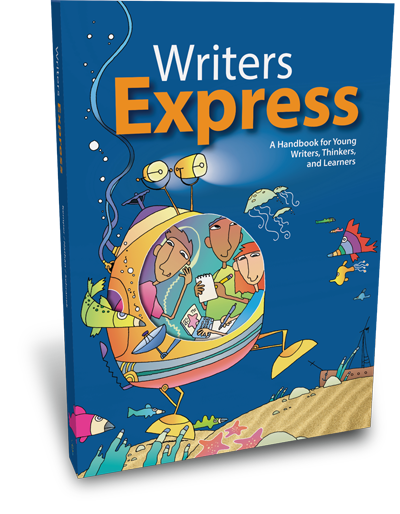The Thoughtful Learning language arts series has been developed over many years and is now a complete series for kindergarten through high school. The series is based upon the original Write Source books that have been very popular among homeschoolers in the past.
Courses teach both composition and grammar, integrating grammar and usage lessons with composition skills in daily lesson plans. For most grades, courses have four components: a full-color student handbook that serves as both text and reference book, a student SkillsBook, a teacher’s edition for the SkillsBook which serves as an answer key, and a teacher’s guide. While you need to purchase the first three components for each course, the teacher’s guide is free online.
Courses that cover more than one grade level share the same handbook and teacher’s guide. Also, kindergarten and grades 11 and 12 do not have SkillsBooks. There is an additional course for ESL/ELL students.
Courses are:
- Writing Spot Buddy Book (kindergarten)
- Write One (grade 1)
- Write Away (grade 2)
- Write on Track (grade 3)
- Writers Express (grades 4-5)
- All Write (grades 6-8 ESL/ELL)
- Write on Course (grades 6-8)
- Write Ahead (grades 9-10)
- Write for College (grades 11-12+)
The new courses have teacher’s guides with daily lesson plans (under “yearlong timetable”) showing specific page assignments from both course components that students will be using. In another section of the guide are fully detailed lesson plans for classroom presentation. I love the way the timetable has direct links to the detailed lessons plans, so you have easy access when you want to use them but otherwise have only brief assignment information to view.
Other elements of each teacher’s guide are a section with additional handouts and activities, getting started activities to familiarize students with each course, guides for assessment, and correlations to Common Core State Standards. These courses strongly align with the Common Core standards, including such skills as writing across the curriculum and answering test questions requiring close reading.
Grammar and usage lessons are very straightforward. While handbooks have sections that teach grammar and usage, SkillsBooks, which are printed in black and white, teach essentially the same material followed by practice exercises. Each SkillsBook lesson indicates the page number in the corresponding handbook that covers the same material. I expect that handbook information on grammar and usage will often only be used for reference and review. Students do not parse sentence or do sentence diagrams. If you want more depth in those areas, you will need to use other resources.
Guides and handbooks that cover more than one grade have lesson plans for only one year. But since the handbooks are essentially reference books, they can be used over and over again. Under the Scope and Sequence for each teacher guide that covers multiple grades, there are brief lists of the key composition skills taught each year with links to different lessons in the handbook that can be used. For example, Write on Course, covering three grade levels, has lessons on writing about literature. The first year’s lesson is on book reviews. The second year links to the same lesson on book reviews and add a lesson on writing letters to authors. The third year again links to the lesson on book reviews then adds a lesson on literary analysis. Even if a lesson is essentially the same, such as in the case of book reviews, students can write about a different topic than they did the year before.
There are individual SkillsBooks for each grade. In the instances where teacher’s guides cover more than one grade, pages to be used in SkillsBooks are arranged to cover the same topics but with different material each year. So the teacher’s guide refers to the same page numbers for SkillsBooks for the two or three years covered by the guide, but students are working in a new book each year.
If you use the complete lesson plans and re-read the handbook information a second or third time in following years, there will be a good deal of repetition. I generally recommend that students be allowed to skip over instructional information if they do not need to study it again. If a SkillsBook assignment repeats practice on topics students have already mastered, skip it.
Parents or teachers need to present lessons to younger students. I expect that older students with sufficient composition skills will be able to work through lessons on their own.
Attractive cartoon illustrations, integration of grammar and composition, clear instruction with examples, and a relatively easy approach to learning grammar all make the series appealing to both students and parents.








